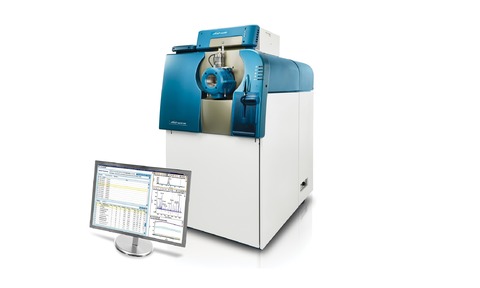
AB Sciex has introduced the TripleTOF 6600 system with SWATH Acquisition 2.0 – a solution for quantitative proteomics.
The high-resolution, accurate-mass system, combined with SWATH Acquisition 2.0, brings new power to proteomic data challenges for advanced biomarker discovery and systems biology.
As the emphasis in proteomics research shifts from cataloguing to comprehensive quantitation, the AB Sciex solution enables the quantification of thousands of proteins across large sample sets with a high level of data completeness and quantitative accuracy and precision.
“The TripleTOF 6600 system with SWATH 2.0 truly transforms proteomics research by providing an advanced level of data completeness and quantitative accuracy” said Rainer Blair, president of AB Sciex.
“The new platform empowers researchers to gain greater insights into biomarkers and disease pathways, which will lead to earlier disease detection and, some day, personalised therapies.”
SWATH Acquisition incorporates a data-independent acquisition strategy and fragments every detectable peptide in the sample in order to acquire quantitative MS/MS data.
The company claims the approach has been shown to increase the capacity of targeted proteomics experiments by more than 30-fold and reduce study time by as much as 90%.
With the increased dynamic range of the TripleTOF 6600 System, researchers can more deeply interrogate complex samples.
Combined with innovative variable window acquisition and the SWATH 2.0 processing software, a significant improvement in quantitative results has been achieved.
Ruedi Aebersold, professor at the Institute of Molecular Biology at the ETH in Zurich, Switzerland, said: “SWATH has already proven its enormous value as a critical discovery and large-scale quantification workflow. The combination of variable window SWATH acquisition with the increased dynamic range of the TripleTOF 6600 will give biological scientists a more precise and complete view of each sample, potentially leading to biological insights that have never been achieved before.”
According to AB Sciex, early experiments comparing TripleTOF 6600 System with SWATH 2.0 to other systems have demonstrated the quantification of up to 90% more peptides with CVs of less than 20% (a threshold often used to determine good limits of quantitation in LC/MS data).
Such advances in capacity and data completeness are expected to make integration with large-scale biology experiments, such as genomics and transcriptomics, much more accessible.
“To take advantage of the full potential of proteomics in translational research, we need to quantitate thousands of proteins in a single experiment with accuracy.,” said Jennifer Van Eyk, director of the Advanced Clinical Biosystems Institute at Cedars-Sinai Medical centre.
“The TripleTOF and SWATH system has enabled us to do this for the first time and contributed to accelerating my research objectives.”




